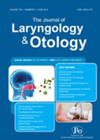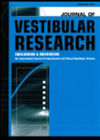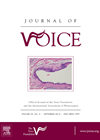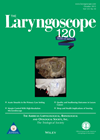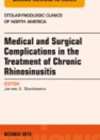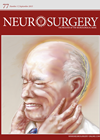
Journal Reviews archive for January 2016
Does teaching affect patient satisfaction?
Teaching practice on real patients has several advantages in terms of lower costs and genuine clinical material but it is often a concern that using real patients for undergraduate teaching may result in patient dissatisfaction and many patients would prefer...
Guidelines for management of orbital infections
Orbital infections predominantly affect the paediatric population and complications can be very serious. The cellulitis can be preseptal or orbital and the abscess can be confined within the periosteum or extend into the orbit. Cavernous sinus thrombosis can complicate the...
Perception of verticality during attacks of Ménière’s
Ménière’s disease (MD) affects the cochlea and all peripheral vestibular receptors. The perception of verticality, a function of the utricle, is evaluated by the subjective visual vertical (SVV) test. The authors studied SVV in two groups of MD patients: a)...
Horizontal nystagmus: vestibular neuritis or lateral canal BPPV?
A horizontal nystagmus due to lateral canal (LSC) BPPV that is present in the upright position, that changes direction with head turn in the horizontal plane has been termed ‘pseudo-spontaneous nystagmus’ (PSN) because it mimics that of vestibular neuritis. The...
New diagnostic criteria for Ménière’s disease – an international consensus
Most readers are familiar with the American Academy diagnostic criteria for Ménière’s disease (MD) but a significant minority will be aware of other criteria from Japan and Korea. This new effort is a collaboration between these three bodies and the...
Spasmodic dysphonia – is greater awareness needed?
Spasmodic dysphonia (SD) is a focal dystonia of the laryngeal musculature. Previously considered to be a rare disorder, it has more recently been suggested that SD is in fact not rare but is frequently misdiagnosed or undiagnosed. This paper would...
Botox application for drooling shrinks salivary glands
The large majority of sialorrhoea (drooling) in paediatric patients is managed conservatively. However in severe cases, often where there is associated developmental delay or a motor disorder, medical and surgical techniques can be used to decrease salivary flow. Botulinum toxin...
Margin control using optical techniques in head and neck surgery
Emerging optical techniques such as high-resolution microendoscopy (HRME) are currently being examined for their reliability in discriminating benign from neoplastic epithelium. These techniques may offer the potential to detect the margin of an upper aerodigestive tract tumour in a non-invasive...
Do I need Google maps in here?
Image guidance surgery (IGS) has grown in popularity. This review article discusses its application in endoscopic sinus surgery (ESS). IGS technology has vastly improved with smaller, more mobile platforms that are easy to set up and use. IGS allows validation...
Identifying CN IX and X using endotracheal tube electrodes
This clinical study describes the possible usefulness of endotracheal tube electrodes in monitoring vocal cord function during cerebellopontine angle surgery in 20 patients. Lower cranial nerves, especially IX and X are at risk of injury during skull base surgery although...
Endoscope assisted removal of jugular foramen schwannomas
This article, written by a renowned surgeon with extensive experience in removal of jugular foramen and skull base lesions, describes a new classification for jugular foramen schwannomas (JFS) and a template for selection of surgical approach for endoscope assisted removal....
Evidence based guidelines for ONS treatment in occipital neuralgia
Occipital neuralgia (ON) can flummox otolaryngologists especially when it follows mastoid surgery. The paroxysms of sharp, electrical pain originating from the occiput can extend along the posterior aspect of the scalp and even up to the mastoid. Although the aetiology...

